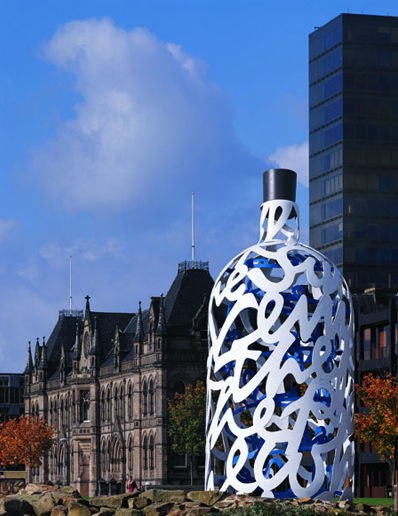A small piece of history was made last week with the unveiling of a large piece of Oldenburg. Andrew Graham-Dixon reports
CLAES OLDENBURG has had designs on England for some time. In the 1960s he had the bright idea of taking down Nelson's Column and replacing it with an enormous gear-stick: ''a monument to the thousands of little gear-stick motions all around Trafalgar Square''. He also proposed a floating monument opposite the Houses of Parliament in the form of a pair of lavatory cistern balls the size of Spanish galleons bobbing up and down in the Thames. Swinging London flushed with embarrassment and decided that it did not want to know.
Oldenburg turned his attention to America. Nothing doing with the mile-high chocolate ice lolly he planned for mid-town Manhattan - they put up the Pan Am building instead - but in the land of the brave they did see fit to erect his 40ft-high clothes-peg (Philadelphia) and his skyscraper-tall baseball bat (Chicago). Still Oldenburg persisted in against-all-odds efforts to construct one of his common object enormities in grey and unadventurous England. Why? Maybe because, although born in Sweden and an American citizen, his art has its deepest roots here. Oldenburg's Brobdingnagian sculpture is based, it might be said, on an original idea by Jonathan Swift. Now, finally, he has repaid his debt to England, thanks to one of the less well-known patrons of contemporary art in this country: Middlesbrough County Council Leisure Services Committee.
England's first Oldenburg was unveiled in Middlesbrough last Friday. The sun shone on Claes Oldenburg and his wife, Coosje van Bruggen, who attended the ceremony; it shone on the members of the Middlesbrough Leisure Services Committee; it shone on their new sculpture, a 35ft-high corked bottle made out of Teesside sheet steel cut...

A lot of bottle
28-10-1993

